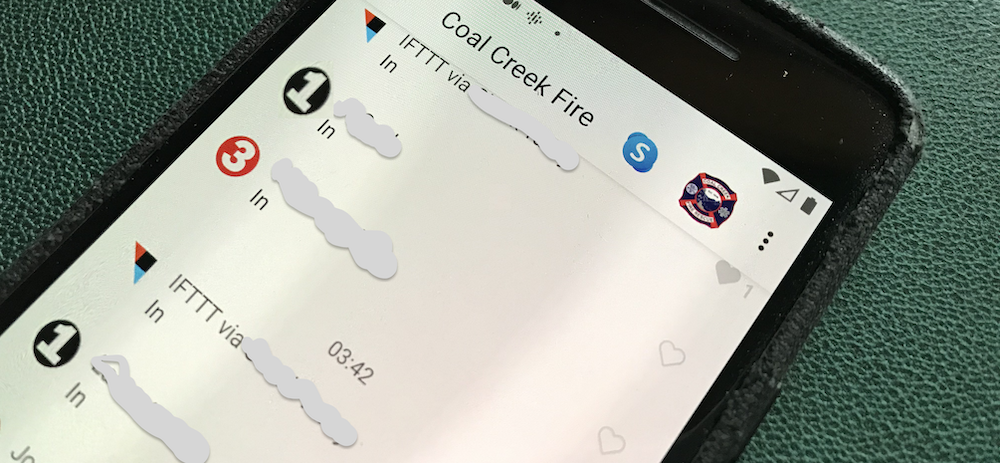
We are a mountain volunteer department where we respond to incidents from home. We don’t do shifts. We dispatch our members using minotors, digital pagers and various digital mechanisms to their mobile device as backup; We coordinate initial response (from home) using GroupMe

GroupMe supports “Bots”, often known as webhooks … where code from one server (e.g. yours) can send information to another, e.g. to GroupMe to post into a group. At first I was confused thinking that a GroupMe Bot was a complex thing, but they don’t need to be, they can be as simple as webhooks (which are simple, e.g. a standalone HTTPS POST).

Following the GroupMe Bot tutorial and setting up a bot using their form, see above takes very little time. Log in as a user of the response group, setup the bot, and then you can send it messages:
curl -d '{"text" : "Your message here", "bot_id" : "YOUR BOT ID"}'
https://api.groupme.com/v3/bots/post
Note: You don’t need a callback URL for this one way communication.
The above is a one line way to test a bot (sending “text” into the group) but you can do the same from any scripting language.
Responserack can auto-populate a GroupMe group posting (or a Slack channel) from CAD dispatches, each such posting providing dispatch information, acting as a “visual separator” between calls (so you don’t think somebody is coming from a previous “In”) and possibly even providing a phone notification that alerts the member.
We’ve created a number of do-it-yourself technologies for dispatch, for response and for other benefits. I’ll share them as do-it-yourself technology.
Sign up to hear more from Responserack on Volunteer Fire Departments, USFA NERIS and USFA NFIRS.
Responserack provides services for volunteer fire departments; member information services, incident reporting, NFIRS and so much more.
